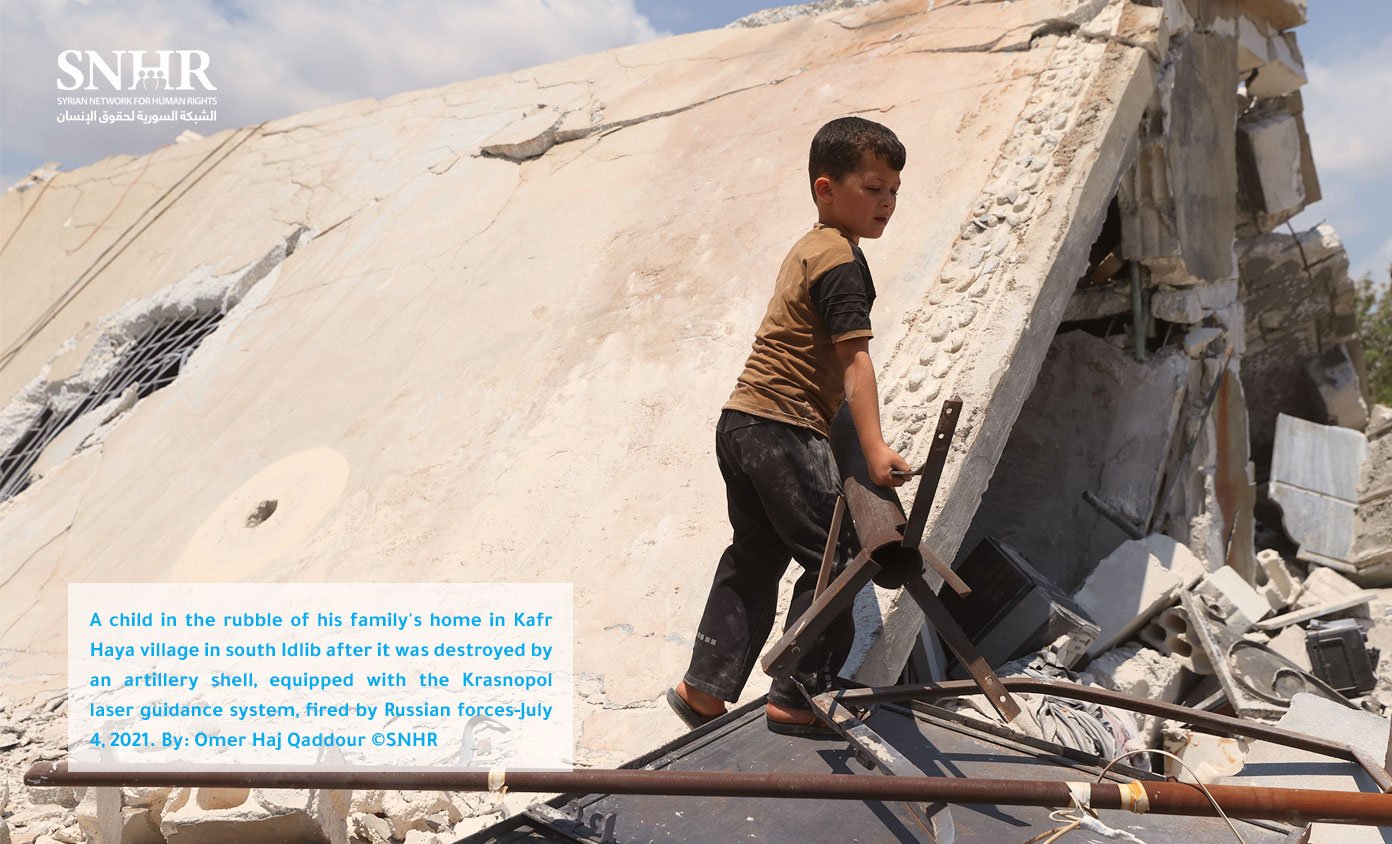Restoring Relations With the Syrian Regime Only Protracts the Conflict Without Providing a Political Solution, as More & More Children Victims Will Face More Aggression

Languages
Available In
Press Release:
The Hague: The Syrian Network for Human Rights today released a statement entitled, ‘On the International Day of Innocent Children Victims of Aggression: 30,034 Children Have Been Documented as Killed in Syria Since March 2011, Including 198 Who Died Due to Torture’, emphasizing that any restoration of relations with the Syrian regime only protracts the conflict without providing a political solution, leading to more child victims facing more aggression.
The statement stresses that even though Syria ratified the Convention on the Rights of the Child in 1993, the Syrian regime has committed the most atrocious forms of aggression against children in Syria in the context of the internal armed conflict. To that end, the statement notes that while all other parties to the conflict are responsible for forms of aggression against children, the Syrian regime has surpassed all other parties to the conflict by far, both in terms of the quantity of crimes committed by the regime and in terms of their systematic and habitual character, which has risen to a level at which the regime’s atrocities amount to crimes against humanity.
As the statement further notes, almost every violation directed against the Syrian people involves children, as SNHR has exhaustively documented. Violations against children have grown exponentially over the course of the past 12 years. In this context, the statement provides an update of the toll of most notable serious violations against children in Syria between March 2011 and June 2023. The statement notes that 30,004 children were killed at the hands of the parties to the conflict and controlling forces in Syria since March 2011. Of these, 22,982 children, divided between 12,924 males and 10,058 females, were killed by the Syrian regime, while 2,048 children, divided between 1,423 males and 623 females, were killed by Russian forces. Additionally, 958 children, divided between 564 males and 394 females, were killed at the hands of ISIS, while Hay’at Tahrir al-Sham (HTS) has killed 74 children divided between 68 males and six females. As for the Kurdish-led Syrian Democratic Forces (SDF), the group has killed 253 children to date, divided between 151 males and 102 females, while all armed opposition factions are responsible for the deaths of 1,007 children, divided between 569 males and 438 females. Meanwhile, international coalition forces killed 926 children, divided between 623 males and 303 females. Lastly, a total of 1,786 children, divided between 1,221 males and 565 females, were killed by other parties.
In regard to arbitrary arrest/detention and enforced disappearance, the statement says that a total of 5,024 children arrested by the parties to the conflict and controlling forces since March 2011 are still under arrest and/or forcibly disappeared, including 3,693 children detained by Syrian regime forces. The remaining children arrested/forcibly disappeared are distributed by the arresting party as follows: 319 children by ISIS, 46 by HTS, 782 by SDF, and 364 by all armed opposition factions.
As the statement further reveals, no fewer than 198 children have died due to torture at the hands of the parties to the conflict and controlling forces in Syria since March 2011. The Syrian regime is responsible for the deaths of 190 of these children due to torture, while the remaining eight died at the hands of ISIS (one child), HTS, SDF, all armed opposition factions, and other parties, with each party of those responsible for the death of two children each due to torture.
The statement also sheds light on other patterns of violations that children face in Syria. For instance, all parties to the conflict have adopted child conscription practices. Meanwhile, the Russian extortion of the Security Council through the abuse of its veto powers, used by Russia to block the delivery of humanitarian assistance, is another explicit and blatant aggression against thousands of children who were forcibly displaced in the context of the armed conflict in northern Syria, with children making up 46 percent of all internally displaced persons (IDPs). The statement further stresses that children in Syria live in a highly dangerous environment, where all parties to the conflict have been responsible for intensively planting hundreds of thousands anti-personnel landmines (APLs), including remnants of cluster munitions over vast areas of Syrian territory. These landmines pose an ongoing threat to the lives of civilians, including children, which will continue for decades to come. To make matters worse, the shiny nature and primary colors of these submunitions potentially attract children, making them the group most endangered by landmines.
The statement stresses that violations against Syria’s children are among the gravest direct and primary results of the ongoing armed conflict that has continued for 12 years due to the failure of the UN Security Council and the international community to bring about a political change in Syria, which has been the very first and primary root of the conflict and the principal demand of the popular uprising since March 2011. Despite these facts, however, some Arab states have decided to restore relations with the Syrian regime, thereby sending a message to millions of victims that there is no chance for a political resolution in accordance with Security Council resolution 2254, which means that all the forms of aggressions against children, as well as other groups of society, will continue with the usual impunity for the perpetrators.
The statement calls on the international community to invest in civil society organizations in Syria which are working to rehabilitate and provide care for children, particularly the especially vulnerable orphaned and internally displaced children. This should be an urgent policy priority, with attention paid to the social, cultural, and economic facets involved, as part of a long-term relief strategy.


